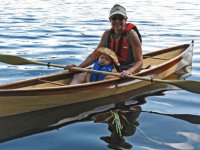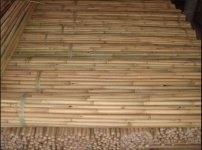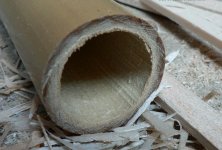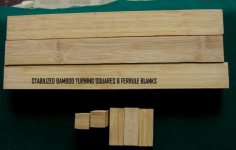its still being used
at this point we have had zero problems, i cannot believe its been a year, so many new things to try. i don't think i will ever live long enough to get out of this world alive.
d. p. do you want a shaft or a ferrule?
madfox, that shaft is from an old house cue, i have about 200 old cues and thats where i get most of my shaft wood. i like to think i am building a newer shaft out of a piece of wood that might have already hit thousands of balls.
redneckjim
i went down to the bamboo farm here in warsaw missouri and just cut myself a bunch, joking aside the bamboo is what they call strand woven engeneered bamboo. its used in flooring, and stairway banisters, or the radial spliced pieces like you see in bamboo fly rods either one works. both to me have a very similar hit.
at this point we have had zero problems, i cannot believe its been a year, so many new things to try. i don't think i will ever live long enough to get out of this world alive.
d. p. do you want a shaft or a ferrule?
madfox, that shaft is from an old house cue, i have about 200 old cues and thats where i get most of my shaft wood. i like to think i am building a newer shaft out of a piece of wood that might have already hit thousands of balls.
redneckjim
i went down to the bamboo farm here in warsaw missouri and just cut myself a bunch, joking aside the bamboo is what they call strand woven engeneered bamboo. its used in flooring, and stairway banisters, or the radial spliced pieces like you see in bamboo fly rods either one works. both to me have a very similar hit.





